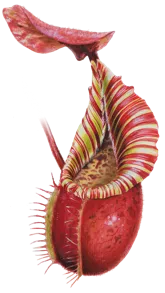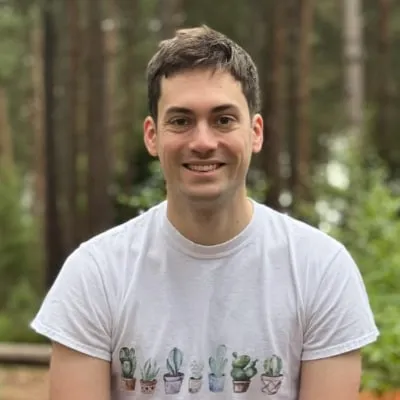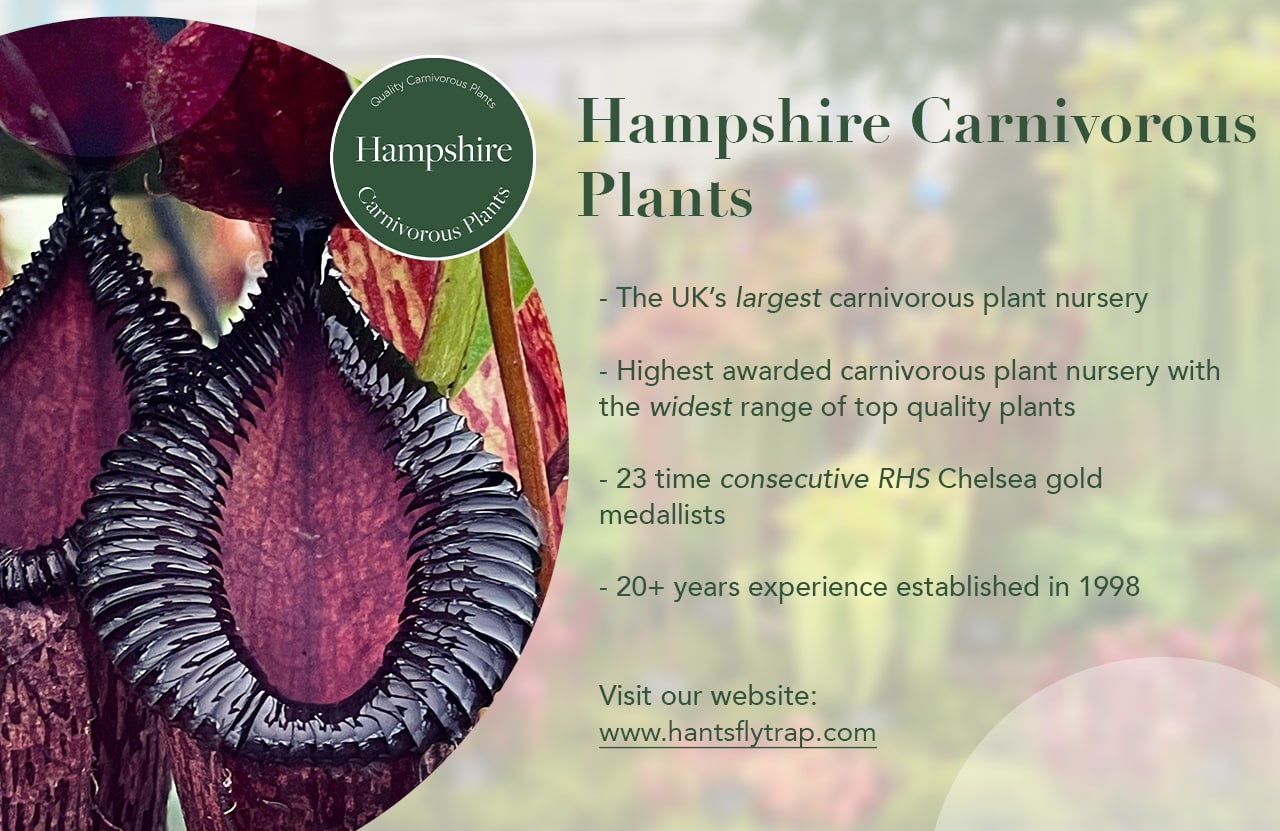Nepenthes edwardsiana
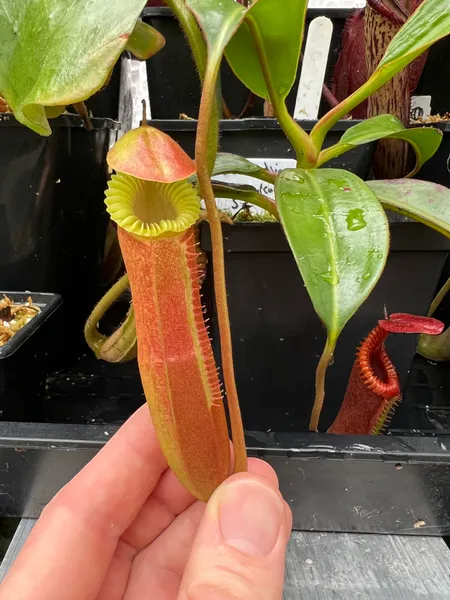 Freshly popped pitcher on another seedgrown N. edwardsiana, this one from a Wistuba grex
Freshly popped pitcher on another seedgrown N. edwardsiana, this one from a Wistuba grex 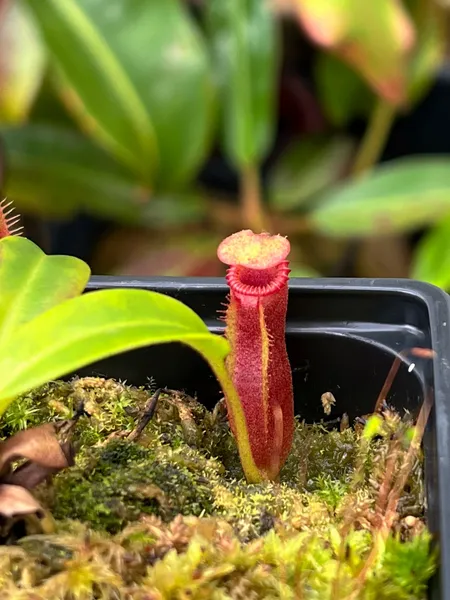 Little pitcher on a seedgrown plant
Little pitcher on a seedgrown plant 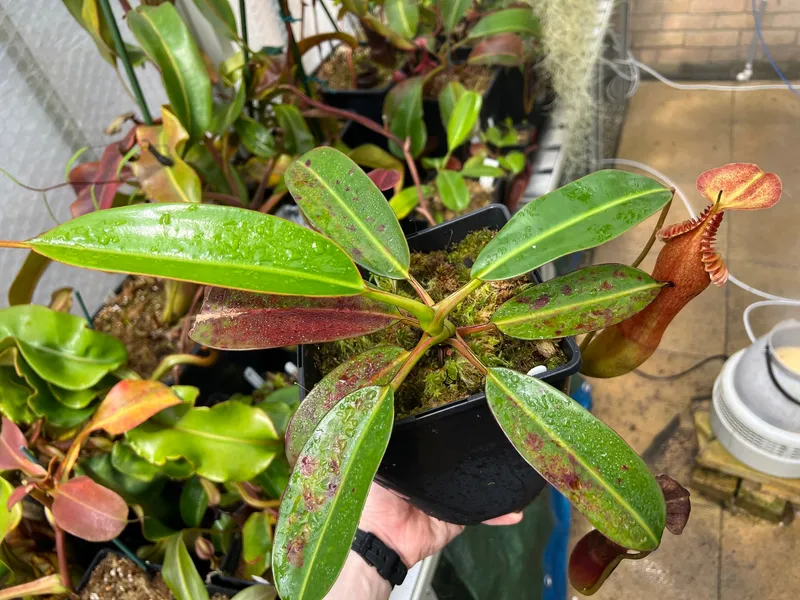 My largest N. edwardsiana - note the red blotching on last year's leaves, caused by sun exposure
My largest N. edwardsiana - note the red blotching on last year's leaves, caused by sun exposure 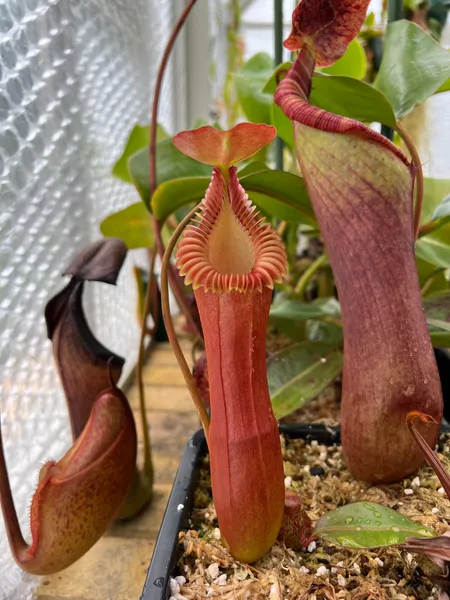 Nepenthes edwardsiana pitcher in my greenhouse
Nepenthes edwardsiana pitcher in my greenhouse 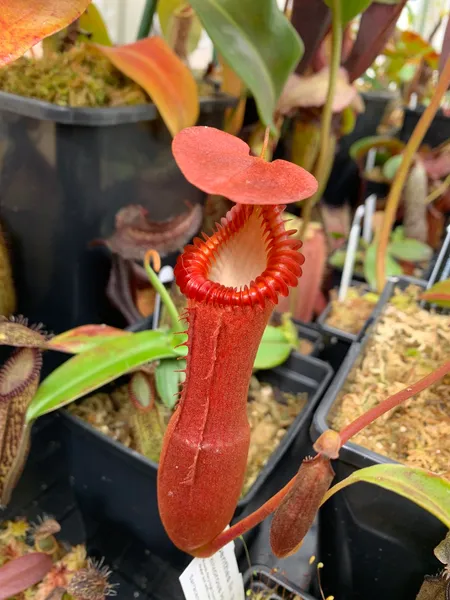 Proper highland conditions bring out the best coloration on N. edwardsiana pitchers
Proper highland conditions bring out the best coloration on N. edwardsiana pitchers 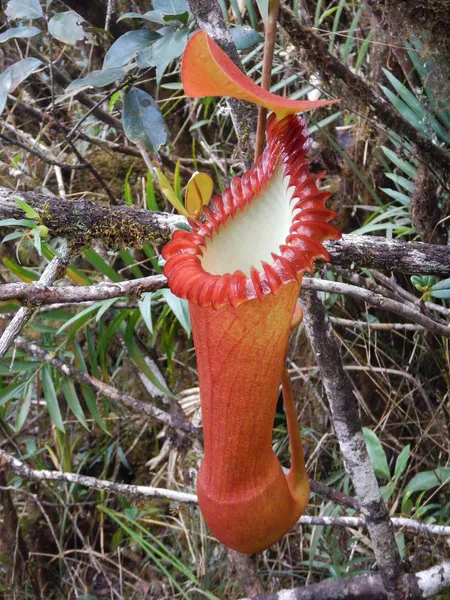 Upper pitcher on Mt Kinabalu, by Christophe Maerten
Upper pitcher on Mt Kinabalu, by Christophe Maerten 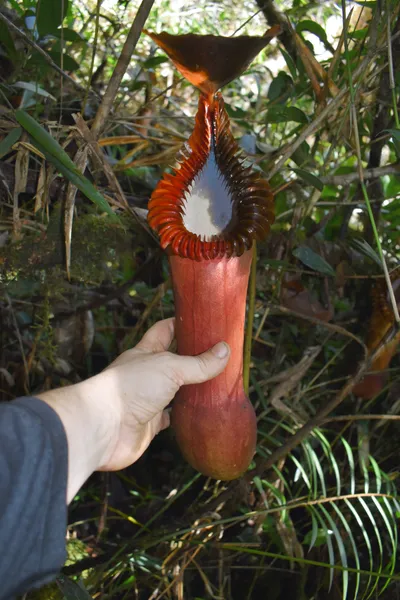 Upper pitcher on Mt Tambuyukon, by James Klech
Upper pitcher on Mt Tambuyukon, by James Klech Description & Care
Nepenthes edwardsiana is one of the most coveted pitcher plants in the world. A native of the Kinabalu and Tambuyukon mountains in Borneo, the species was first described in 1859 by Joseph Dalton Hooker. The taxonomy has been revised several times since then. At one point N. edwardsiana was united with N. villosa as a single species, while its toothy neighbor on Mt Trusmadi - N. macrophylla - was treated as one of its subspecies. To complicate matters further, it forms a natural hybrid with N. villosa which was once described as a separate species called N. harryana. It wasn’t until 1997 that Nepenthes edwardsiana was recognised by botanists as the species we know today.
It is a spectacular plant. The tall, narrow pitchers - which vary in color from yellow through to deep red - can reach up to 50cm in height, making them some of the largest in the genus. The peristome is lined with highly developed ribs that give the appearance of sharp teeth. I grow many of the ‘toothy’ Nepenthes, including N. hamata, N. villosa, and N. macrophylla, but N. edwardsiana is definitely a standout in this regard! Another quality I love about this species is the near-white interior of its pitchers, which - similar to many forms of N. lingulata and N. ramispina - makes for a lovely contrast.
I grow several forms of the species, including plants from Wistuba and individuals from seed, and all have red pitchers. For some reason, most of the plants in cultivation seem to be red - I rarely see the yellow form in collections I visit. It’s a fairly slow plant that thrives on stable conditions, but is definitely less exacting about its need for cool nights than other toothy highlanders.
How I Grow It
| Media | Long fibre sphagnum moss, perlite, and - optionally - orchid bark (2:1:1). |
| Water | Keep on the drier side compared to most Nepenthes - I let the top moss start to dry before watering again. |
| Light | Bright, diffused light - the leaves burn easily with too much direct sun. |
| Fertiliser | Less than my other Nepenthes - I occasionally feed the pitchers, but any fertilisation of the roots can stop pitcher production. |
| Temperatures | 12°C (54°F) minimum year-round, with summer highs of ~ 30°C (86°F). |
| Humidity | 70% during the day, rising to over 90% at night. |
Learn more about cultivation with my guide to growing Nepenthes.
Day & Night Temperatures
Nepenthes edwardsiana is a highland species, found at elevations of between 1600 and 2700 meters. This range is highlighted in orange above, and equates to temperatures of approximately 19 - 27°C during the day, and 9 - 17°C at night.
See Also
I've written profiles of the following hybrids involving Nepenthes edwardsiana:
Habitat
| Native to | Borneo |
| IUCN Red List status | Vulnerable |
| Natural hybrids | N. burbidgeae, N. rajah, N. villosa |
Buying N. edwardsiana
| Availability | One of the hardest of all Nepenthes to find! Even tissue cultured specimens are very rare in cultivation. |
| Borneo Exotics codes |
|
| Recommended nursery | California Carnivores Hampshire Carnivorous Plants |
